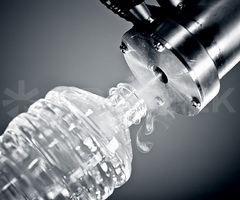Kikurage in the recurrence of prostate cancer.

The United States Department of Health approved treatments for prostate cancer with the use of cryosurgery, was developed by company Andocean ink. (Endocare Inc.). Cryosurgery has proven to be highly effective in the treatment of patients with recurrence of prostate cancer after radiotherapy. Every year, 30% of the 180,000 people who are diagnosed with prostate cancer undergoes radiation therapy as a primary treatment. Of this number, approximately 40%, or almost 22,000 people of the disease gives a relapse. For these patients, a secondary treatment using the methods of cryosurgery may stop disease progression and improve long-term survival prognosis. The study of 43 people, failed to have a course of radiation therapy for prostate cancer showed that nearly two years after the treatment with the use of cryosurgery 97% of the patients suffered relapse of the disease. They noted the level of prostate specific antigen (PSA) lower than 4.0 ng/ml Among these patients, 60% had not detectable level of PSA less than 0.1 ng/ml.
"This is a major achievement, allowing to save the life of unfortunate patients have a course of radiation therapy." said Dr. Aaron Katz, assistant Professor of urology Presbyterian Center new York Presbyterian Hospital.
It was noted that the methods of cryosurgery as primary treatment and for treatment of patients with relapse of prostate cancer is very promising, give a good long-term forecasts and do not have complications. At the same time, unlike other procedures, methods, cryosurgery can be used on patients older and senile patients, and patients with various diseases on the background of prostate cancer.
The characteristic pattern of choice of treatment method boils down to a choice between radical prostatectomies for the sake of life as the main surgical procedure, which can be successfully leashü a small number of U.S. urologists, hormone therapy or careful waiting. This radical prostatectomy improves the prognosis for long-term survival by 56% according to published data from various sources, but due to the complexity of the procedure, complications, complexity of the postoperative period such radical surgery is recommended only for the young and physically healthy patients. Less than 5% of all patients actually have the right to hope for a long-term favorable outcome after prostatectomy.
Hormone therapy or prolonged use of androgenic drugs can deter the progression of the disease for 68% of the people, but it is not method to eliminate cancer. In addition, there are side effects when hormone therapy such as metabolic disorders, osteoporosis, lethargy, etc.
Methods cryosurgery is a method of minimally invasive technologies that use extremely low temperatures to freeze and kill cancer cells in and around prostate. Patients undergoing cryosurgeryusually carried out in a hospital one night, and then can return back to your daily life during the week. In the journal "Urology" discusses the evolving forms of cryosurgery, in particular, the method of cryoablation, this procedure is connected cryosurgery and ultrasonic inspection. When the temperature control freezing the doctor the opportunity to visually observe freeze the tissue, thereby improving treatment of fabrics, and increase the safety and efficiency of the method.
According to the materials of clinical trials to participate in the procedure all 43 people (age averaged 69 years) were treated with hormone therapy for three months in order to reduce the size of the prostate. After receiving treatment by the methods of cryosurgery , these patients were subjected to rectal studies and researchthe required blood for the maintenance of prostate specific antigen (PSA). Blood tests were conducted every three months. Using 21.9 months 97% of the total number of patients had a PSA of 4.0 ng/ml or lower. Information about severe complications after cryosurgery were few, only 4 people, or 9 %, had complications. Some patients experienced slight pain or swelling after the procedure, but these symptoms disappeared within three months after treatment.
When conducting in patients patients use local anesthesia, so that patients during surgery is active, you can talk with your doctor, but patients do not feel pain during the entire procedure. A thin catheter, which is a warm liquid, is placed in the urethra to protect the organs from the action of cold temperatures. Thin cryoprobe is inserted through small cuts in the prostate and treated it with liquid argon flowing from the tip cryoprobe, the tumor is frozen to -40°C and destroyed. Approximately 10 minutes to complete the first cycle of freezing, and then immediately move on to the next retry procedure to ensure the destruction of all cancer cells. The operation shall not result in the loss of blood and lasts for approximately 1-2 hours.
Some patients may experience mild sensitivity for 2-3 days after the cryoablation,however,this side effect is typical of all surgical treatments of prostate cancer. Long-term results of cryoablation are similar to results of other methods of treatment, and can manifest as sexual impotence, disorders of the bladder, pain, etc.
Currently, more than 50 U.S. medical institutions intend to use the method of creagorry for the treatment of prostate cancer.
.svg)













